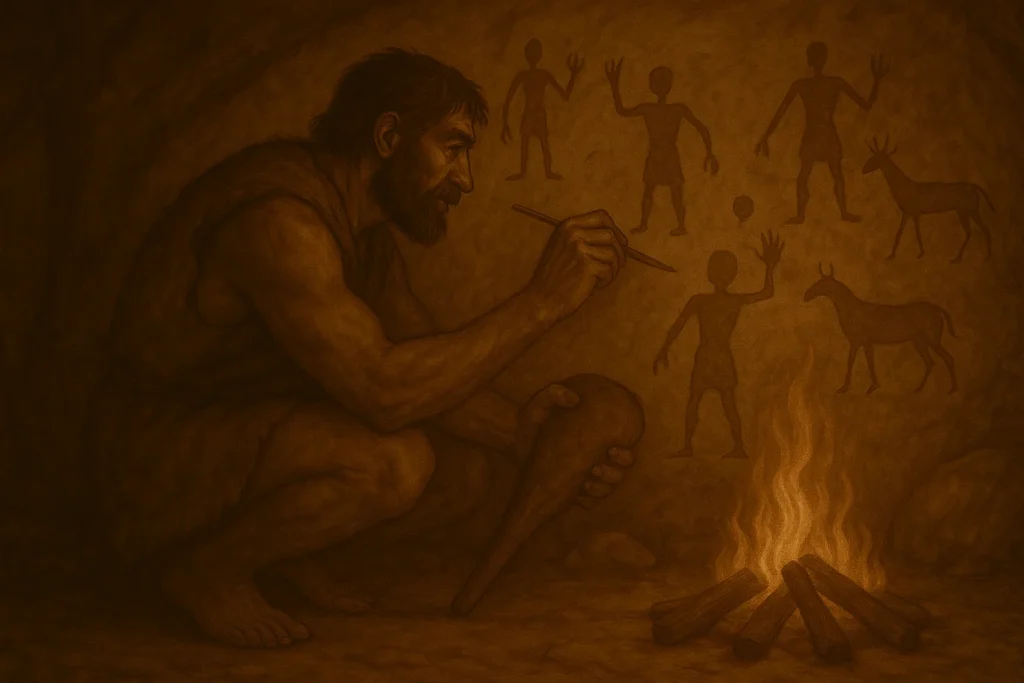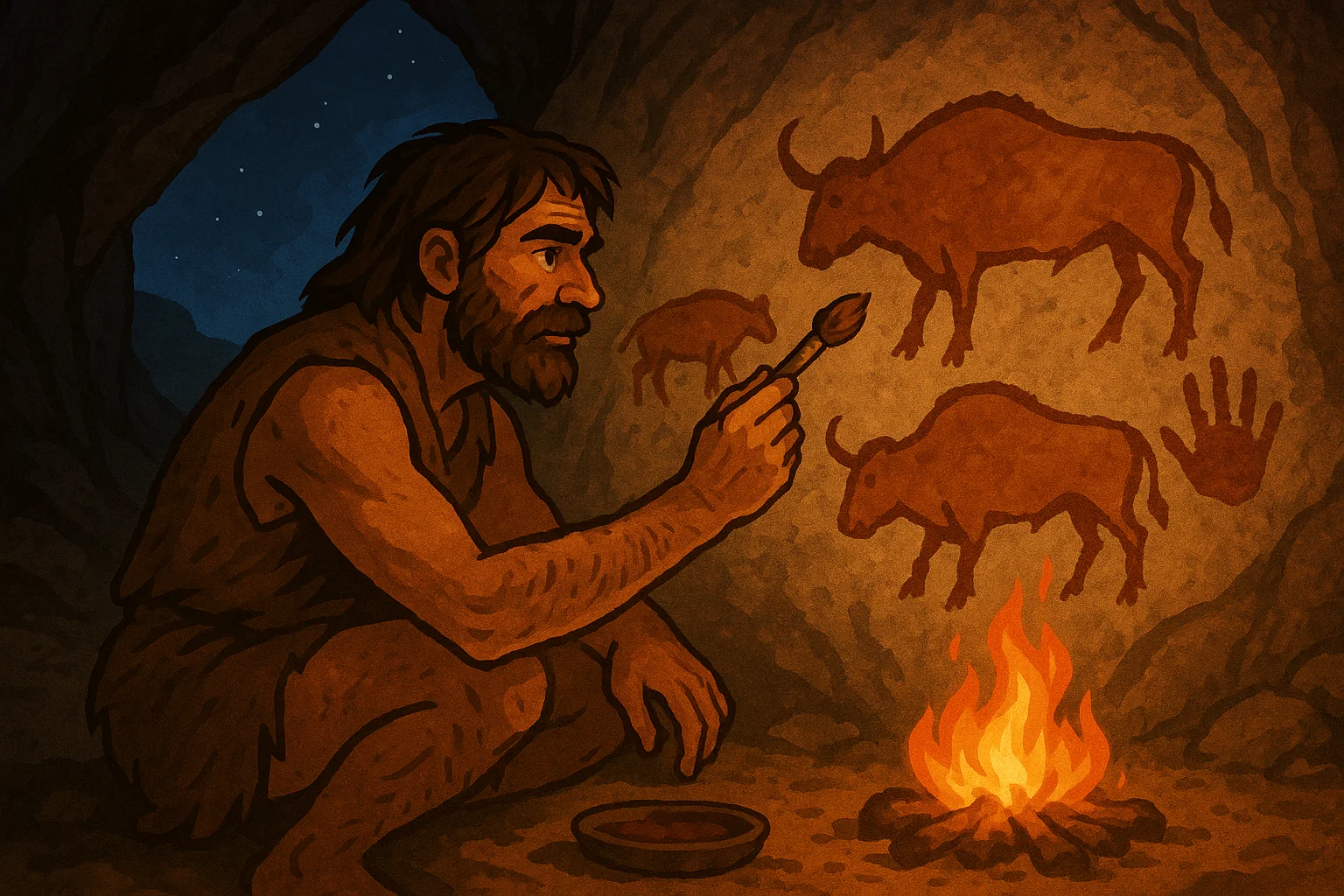Hey there, internet explorer (no, not the browser—RIP)! 👋
Let’s take a moment to appreciate the weird and wonderful world of Ancient Artz—yep, with a z, because this isn’t your average dusty museum rant. We’re talking about the OG creators: prehistoric painters, clay crafters, tomb decorators… the real deal artists before hashtags and NFTs.
I didn’t always care about ancient art, to be honest. It sounded like something you’d hear in a sleepy voiceover during a field trip. But then I accidentally got pulled into a rabbit hole of cave paintings and temple carvings—and holy hieroglyphs, it was fascinating.Ancient Artz
So let’s do a little time-traveling together. I promise, no boring lectures—just stories, quirky facts, personal thoughts, and a little bit of love for the world’s oldest creative souls.
When Cavemen Picked Up the First Paintbrush
Okay, so picture this: You’re living 30,000 years ago. You’ve just had a decent mammoth steak, and now you’re chilling by the fire, thinking… “Hmm, I kinda wanna draw a bison on that wall.”Ancient Artz
Boom. Ancient Artz
That’s basically how cave art began. Some of the oldest paintings ever found are in places like Lascaux (France) and Altamira (Spain). These guys didn’t have Instagram filters or digital brushes. They crushed up rocks, used sticks and animal fat, and painted by firelight. And let me tell you—some of those bison and horses? Way more detailed than my stick figure people.Ancient Artz
I remember seeing one of these images online during a boring study session. Ten minutes later, I was deep-diving into Paleolithic art forums. There’s something wild about realizing that someone with zero tech and no formal “training” created something so raw and beautiful.Ancient Artz
Mini tip:
If you run a chill blog or artsy corner of the internet, try featuring ancient cave art in a fun “Then vs. Now” post. It’s weirdly relatable—and people love that old-vibe aesthetic.Ancient Artz
Mesopotamia: Art With a Side of Admin Chaos
Fast forward a bit to Mesopotamia, where the vibes were all about gods, grains, and government paperwork. These people were carving symbols into clay before it was cool.Ancient Artz
Here’s where cuneiform comes in—the first known writing system. Think: triangle-shaped stamps pressed into wet clay. Sounds simple, but trust me, one wrong wedge and your love poem turns into an inventory list for goats.
What I love about Mesopotamian art is how it blends creativity with everyday life. One minute you’re looking at a divine statue with an epic beard, the next you’re reading about a dude trading fish for beer.
Plus, their little cylinder seals (tiny carved rollers for stamping clay) were like ancient business cards—functional and artsy. You’ve gotta respect the multitasking.
Egyptian Art: Peak Symmetry and Selfies for the Afterlife
Let’s be real—ancient Egyptian art is iconic.
I mean, those side-profile pharaohs with one eye facing forward? Classic. They had style, symmetry, and a serious obsession with the afterlife. Every statue, every mural, every golden cat-shaped ornament was packed with meaning.
I once visited an Egyptian exhibit in a museum, and no lie—some of those carvings had better detail than my phone camera. These people were not playing around.
And the colors! Even after thousands of years, those reds, blues, and golds still pop. Meanwhile, my bedroom wall art fades after one summer.
Real blogger moment:
If you’re into interior design or aesthetic content, Egyptian art is full of inspo. Their use of balance and bold lines? Straight-up mood board material.
Greece: Pottery Drama and Olympic Flexes
Greek art is basically the art-school kid of the ancient world—bold, dramatic, and way too into mythology. And honestly? I’m here for it.
Their black-figure and red-figure pottery tells stories like soap operas: tragic heroes, feuding gods, awkward party scenes (hi, Dionysus). And don’t even get me started on their sculptures—those things are carved like they’re about to come alive and judge your outfit.
One of my favorite things about Greek art is how it captures motion. Like, you look at a discus thrower statue and feel the tension in his muscles. These artists were flexing their skills in more ways than one.
Also, quick shoutout to the Greek obsession with perfection—they made abs look like marble was invented just for them.
Ancient China: Where Art Got Philosophical
If Greek art was about showing off, ancient Chinese art was about inner peace.
These artists weren’t just making pretty things—they were reflecting on the universe. A painting of a pine tree wasn’t just a pine tree—it symbolized strength, patience, and endurance. Kinda poetic, right?
One time I tried Chinese calligraphy at a local cultural festival. Let’s just say… it takes a lot more control than it looks like. My “peace” character looked more like “puddle.”
Still, it gave me mad respect for the dedication those artists had. Whether it was painting on silk or carving jade
, everything was intentional. Every brushstroke mattered. (Unlike my midnight doodles.)
Ancient India: Bold, Colorful, and Spiritually Loaded
Last but not least, let’s talk about ancient Indian art, which is honestly a whole vibe.
This is where art, religion, and storytelling come together in a riot of color and detail. Ever seen the carvings on Indian temples? They’re like Instagram reels frozen in stone—each figure in motion, each expression vivid, each scene telling a tale.
I stumbled on photos of the Ajanta Caves while searching for tattoo ideas. (Yeah, I’m that person.) And let me tell you—those paintings? They’re legit breathtaking. Scenes from Buddhist tales, swirling patterns, layered colors… they’ve aged better than most of us.
Indian art also understood one thing early: color is power. They didn’t shy away from bold palettes, and it makes their ancient works feel surprisingly modern.
So Why Do I Actually Care About Ancient Artz?
Okay, here’s the real reason I’m obsessed:
It feels human. Like, deeply, universally human.
Ancient Artz is proof that even 10,000 years ago, we wanted to say something. We wanted to be seen, heard, remembered. Sure, their canvas was a cave wall and not a blog post—but the heart behind it? The urge to share? Exactly the same.
When I look at a handprint on a cave wall, I don’t see some distant ancestor. I see a fellow creative soul leaving their mark. Literally.
It’s kind of comforting, honestly. Trends come and go, platforms die (RIP Vine), but the human urge to create? That sticks around.

Casual Tips for Exploring Ancient Art (Without Boring Yourself)
Wanna dip your toes into this world without getting stuck in Wikipedia black holes? Here’s what I recommend:
1. Visual-First Approach
Google “ancient art” + the culture you’re curious about. Browse the image results and pick what catches your eye. Follow the curiosity.
2. YouTube Is Your Friend
Watch short docuseries like Crash Course, or even museum channel clips. They explain things in a super digestible, non-snoozy way.
3. Museums IRL or Virtual
Even if you can’t travel, virtual tours of places like the British Museum or The Met are totally free—and genuinely cool. Pop some headphones in, pretend you’re cultured.
4. Use It in Your Aesthetic
Add cave art to your blog headers. Feature Mesopotamian carvings in a post about timeless style. Ancient art has serious design potential.
Final Thoughts: Ancient Artz Hits Different
So, what’s the takeaway here?
Ancient Artz isn’t just a topic from history class. It’s a reminder that we’ve always been creative, always been storytellers, always been human. Whether we’re carving into stone, painting on silk, or typing into WordPress—we’re all part of the same wild, colorful tradition.
And let’s be real: those cavemen with their bison murals? Total legends.


[…] Ancient Artz (yes, we’re spelling it with a Z because we’re adding a little flair) is actually super cool—in a “this-has-ruled-the-world-for-thousands-of-years” kind of way. And once you start paying attention, you’ll realize how much of our modern world is straight-up borrowing (read: stealing) from ancient masterpieces. […]